Recent Posts
Why Choose SERVPRO for Professional Restoration Services
5/1/2024 (Permalink)
 Use of Containments Can Be An Important Tool
Use of Containments Can Be An Important Tool
SERVPRO of Hacienda Heights/ Rowland Heights builds containments as a critical part of their restoration process, particularly in scenarios involving mold remediation, biohazard cleanup, and certain types of water damage restoration. Containments are used to prevent the spread of contaminants, maintain safety, and protect unaffected areas of a property.
These physical barriers are built with plastic sheeting creating containment walls to isolate affected areas from the rest of the property, preventing airborne contaminants, dust or debris preventing cross contamination to clean areas. By containing affected areas, SERVPRO can focus restoration efforts more efficiently on the specific areas that require cleanup or repair. This helps minimize disruption to the rest of the property and its occupants. Containments facilitate more effective restoration outcomes by concentrating efforts on targeted areas. This allows for thorough cleaning, drying, or remediation without interference from external factors.
Restoring Hope After Fire: Why SERVPRO Is Your Trusted Partner
5/1/2024 (Permalink)
 After a fire happens
After a fire happens
The aftermath of a fire can be overwhelming and challenging, but with the support and help from SERVPRO you can begin the process of recovery and restoration. Here are some helpful tips to consider when dealing with the aftermath of a fire: 1. Ensure Safety: Safety should always be your top priority. Do not enter the property until fire officials confirm it is safe to do so. Structural damage, electrical hazards, and other dangers may still be present even after the fire is extinguished. 2. Contact Your Insurance Company: Notify your insurance company promptly to begin the claims process. 3. Contact Restoration Professionals: Reach out to reputable fire damage restoration companies like SERVPRO for assistance. They specialize in cleaning, repairing, and restoring properties after fire damage. They can assess the damage, develop a restoration plan, and coordinate with your insurance company. 4. Document the Damage: Take photographs or videos of the damage before any cleanup or restoration begins. SERVPRO will provide photo documentation to you and your insurance adjuster which is essential for your insurance claims. 5. Secure the Property: If your home is left vulnerable due to fire damage, SERVPRO can assist in securing doors, windows, and openings by boarding up damaged areas to help protect against unauthorized entry and to help prevent further damage from weather or vandalism. Dealing with the aftermath of a fire requires patience, resilience, and professional expertise. SERVPRO is an invaluable partner in the recovery process, helping you restore your home and belongings to pre-fire condition efficiently and effectively. If you've experienced a fire, don't hesitate to seek assistance from your trusted SERVPRO of Hacienda Heights/ Rowland Heights to begin the journey toward rebuilding and recovery.
Cleaning Tips from SERVPRO of Hacienda Heights/ Rowland Heights
5/1/2024 (Permalink)
SERVPRO of Hacienda Heights/ Rowland Heights specializes in professional cleaning and restoration services, utilizing advanced techniques and equipment to achieve thorough and effective results. While SERVPRO's services are comprehensive and tailored to specific restoration needs, here are some general cleaning tips that align with our approach to maintaining a clean and healthy environment: 1. Regular Cleaning Routine: Establish a regular cleaning routine to maintain cleanliness and prevent buildup of dirt, dust, and debris. Regular vacuuming, dusting, and surface cleaning can help keep your home or business clean and fresh. 2. Use Proper Cleaning Products: Choose cleaning products that are suitable for different surfaces and materials. Avoid harsh chemicals that could cause damage or leave residues. SERVPRO uses our own name brand professional-grade cleaning products that are effective yet safe for various surfaces. 3. Focus on High-Touch Areas: Pay special attention to high-touch areas such as doorknobs, light switches, handrails, and countertops. These areas can harbor germs and bacteria, so clean them regularly with disinfectant wipes or solutions. 4. Deep Cleaning Carpets and Upholstery: Periodically deep clean carpets and upholstery to remove embedded dirt, allergens, and odors. 5. Clean Air Ducts and HVAC Systems: Maintain clean air ducts and HVAC systems to improve indoor air quality and prevent dust and contaminants from circulating. SERVPRO offers air duct cleaning services to remove buildup and improve system efficiency. 6. Professional Mold Prevention: If you have experienced water damage, consider professional mold prevention services. SERVPRO can assess moisture issues, apply antimicrobial treatments, and recommend preventive measures. 7. Work with Professional Cleaners: For specialized cleaning needs, such as post-fire cleanup, mold remediation, or biohazard cleanup, rely on professional cleaners like SERVPRO. They have the expertise, equipment, and resources to handle complex cleaning and restoration projects safely and effectively. By incorporating these cleaning tips into your maintenance routine and partnering with professionals like SERVPRO of Hacienda Heights/ Rowland Heights when needed, you can ensure a clean, safe, and healthy environment for your home or business. Our comprehensive cleaning and restoration services are designed to address a wide range of cleaning needs, from routine maintenance to disaster recovery, with a focus on quality and customer satisfaction.
Why Choose SERVPRO After A Fire
5/1/2024 (Permalink)
 After a fire
After a fire
Cleaning up after a fire is a complex and challenging process that often requires assistance from experienced restoration companies like SERVPRO of Hacienda Heights/Rowland Heights. Here's how we can assist you after experiencing a fire: 1. Insurance Coordination: SERVPRO can work directly with your insurance company to assist with documentation and claims filing. This includes providing detailed reports, photos, and documentation of the fire damage to support your insurance claim. 2. Thorough Cleanup and Restoration: Our team is trained and equipped to perform thorough cleanup, restoration, and removal of smoke residues, soot, and debris. They use specialized techniques and equipment to ensure that your property is restored to a safe and habitable condition. 3. Salvageable Content Cleaning: SERVPRO can pack up and clean salvageable contents, including clothing, linens, furniture, and other belongings affected by the fire. They use professional cleaning methods to remove smoke odors and residues. 4. HVAC Cleaning: Cleaning your HVAC system is essential after a fire to remove smoke residues and prevent the spread of odors throughout your home. SERVPRO can thoroughly clean and inspect your HVAC system to ensure it operates efficiently and safely. 5. Water Damage Restoration: Water damage is common after firefighting efforts. SERVPRO can address water damage by drying out affected materials, preventing mold growth, and restoring water-damaged areas of your property. 6. Odor Removal: Lingering smoke odors can be persistent and unpleasant. SERVPRO utilizes advanced odor removal techniques, including ozone treatment and thermal fogging, to eliminate odors and improve indoor air quality. 7. Structural Repairs: In addition to cleaning and restoration, SERVPRO can provide necessary repairs to restore structural integrity and safety to your property. This includes repairs to the framing structure, walls, flooring, ceilings, and other affected areas. 8. Restoration to Pre-Fire Condition: SERVPRO's goal is to restore your home or property to its pre-fire condition, ensuring that it is safe, clean, and comfortable for occupancy once again. Experiencing a fire can be overwhelming, but with SERVPRO's expertise and comprehensive restoration services, you can navigate the cleanup and restoration process with confidence. If you've recently experienced a fire, contact SERVPRO of Hacienda Heights/Rowland Heights for professional assistance in restoring your home or business. Their team is ready to respond quickly and effectively to help you recover from fire damage and get your life back on track.
Preventing Fires This Summer
5/2/2023 (Permalink)
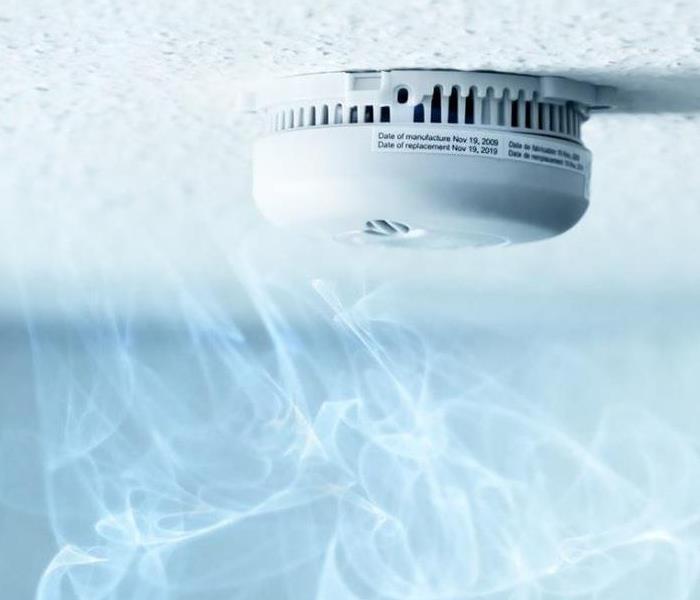 Prevent fires in your home.
Prevent fires in your home.
Summer is slowly approaching and with that comes fire season for Southern California. However, cooking and heating are the top two leading causes for house fires. What can we do to prevent house fires?
- Install smoke alarms on every level of your home and outside bedrooms.
- Test your smoke alarms every month and change out the batteries if they aren't working
- Stay in the kitchen when cooking, or by the grill when grilling.
- Turn off your ovens and keep the surrounding areas clear of clutter.
- Keep anything that can burn at least three feet from fireplaces, heaters, etc.
- Unplug or turn off heaters when you aren't in the room.
- Have your heating systems and chimney’s regularly inspected.
Be safe this summer and protect yourself and your home from fire damage with these simple prevention tips.
Document Restoration Process
4/27/2023 (Permalink)
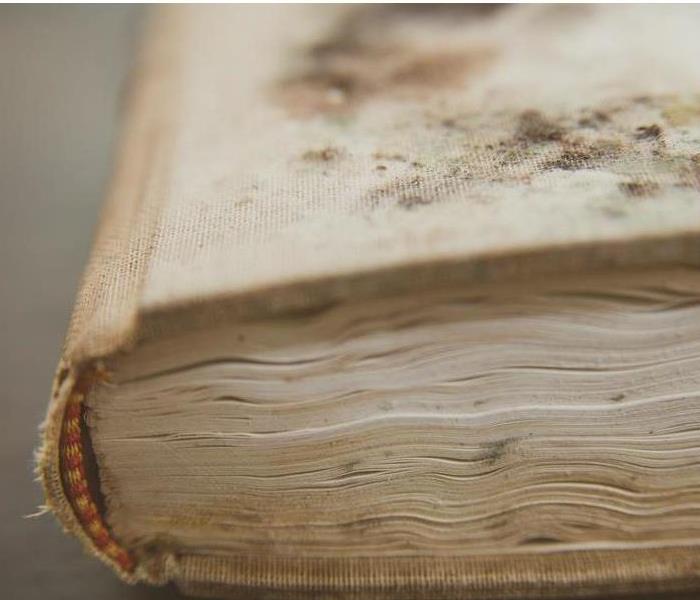 SERVPRO can restore your documents!
SERVPRO can restore your documents!
In many instances of water/fire damage or even bacterial contamination, personal belongings and documents can get ruined. Some of our most valuable possessions can be books and pictures. The last thing we’d want is for them to be destroyed. Thankfully SERVPRO has highly trained specialists in document restoration. So there is still hope for your priceless pictures, books and documents!
Document Drying and Restoration Techniques
SERVPRO uses a few different techniques to restore/dry documents.
Vacuum Freeze: This method takes a damaged document and completely freezes it. It is then placed under a vacuum in order to remove water from the documents. This allows the water to go directly from ice to vapor removing any liquid that there might be.
Gamma Irradiation: This process will sterilize documents that were exposed and/or contaminated by bacteria, viruses, or chemicals.
Digitization Services: During this process SERVPRO will help digitize your documents. This helps you save storage space and will prevent them from being damaged or lost. This is usually best for personal or government documents that you cannot lose or ruin.
No matter which technique you prefer, you can be rest assured that SERVPRO has a way to restore your invaluable documents.
What Do Moisture Meters Do?
4/17/2023 (Permalink)
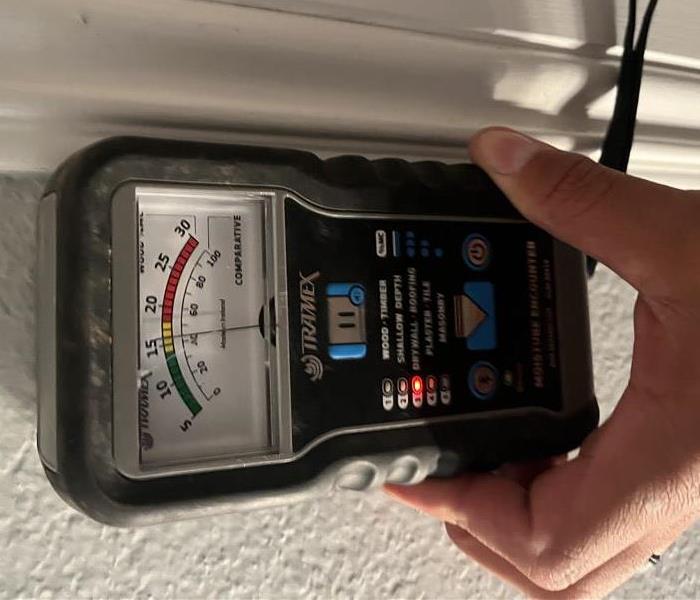 Moisture meters detect how much water may be on a surface.
Moisture meters detect how much water may be on a surface.
A moisture meter is a tool used by SERVPRO and many other restoration companies to detect moisture in certain materials.
Most moisture meters are used on wood such as flooring or furniture. However, there are some calibrated to be used on concrete. Typically the scale ranges from 5-40% moisture content when testing on wood and 0-100 when tested on non-wood materials such as concrete. Some meters have an additional scale ranging from 0.2-50% MC used for reading gypsum which typically makes up plaster, blackboard, or drywall.
There are also usually color indicators that make it a lot easier to detect moisture. Green (dry), yellow (moderate), and red (saturated) coincide with the other scales on the meter to help identify how much moisture is found.
How to Tell if Mold is Growing
4/17/2023 (Permalink)
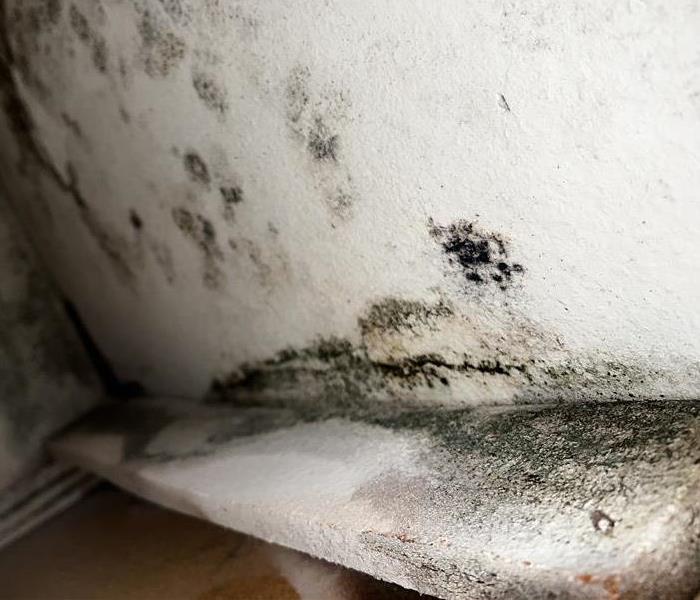 It's best to pay attention to the warning signs of mold.
It's best to pay attention to the warning signs of mold.
Mold can be hard to detect and dangerous if left untouched. There are a few signs that there could be mold on your property.
- Peeling Wallpaper: bubbling or cracking paint or wallpaper usually means there is moisture in the wall.
- Water Spots: Along with the peeling wallpaper, mold can cause brown discolored spots on your walls
- Musty Odor: You’ll start to smell an old or musty smell in the affected room.
- Allergies: Sometimes if there is mold in your walls, you will develop symptoms of allergies or a cold such as:
- Sore throat
- Coughing and sneezing
- Skin irritation
Mold grows in damp areas so it's best to pay attention to any abnormalities in your paint or wallpaper. If you discover any of these signs, call SERVPRO to do a free inspection. We will help you come up with the best course of action to get your property back to its original state.
Fire Safety: What to Do Until Help Arrives
9/28/2022 (Permalink)
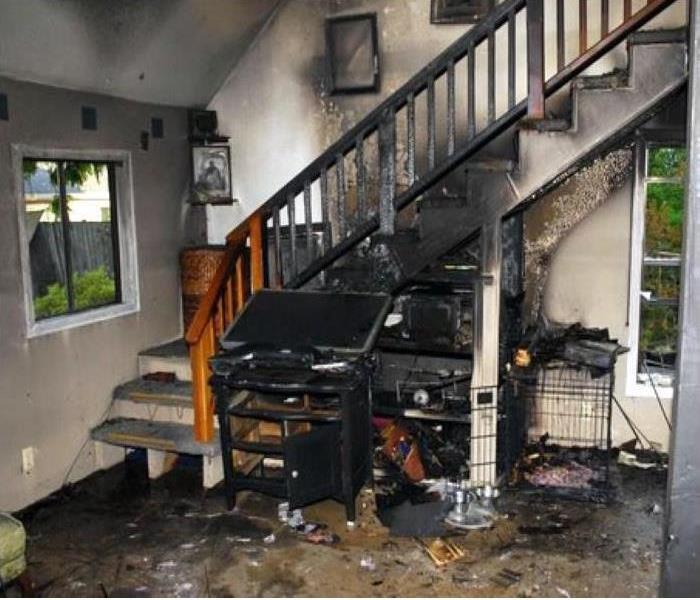 You can help minimize fire damage!
You can help minimize fire damage!
If your property has undergone fire damage, there are a few precautionary measures you can take while waiting for SERVPRO to arrive.
What to Do:
- Limit movement in the home to prevent soot particles from being embedded into upholstery and carpets.
- Keep hands clean so as not to further soil upholstery, walls, and woodwork.
- Place clean towels or old linens on rugs, upholstery, and carpet traffic areas.
- If electricity is off, empty the freezer and refrigerator and prop doors open.
- Clean and protect chrome with a light coating of petroleum jelly or oil.
- Wash houseplants on both sides of the leaves.
- Tape double layers of cheesecloth over air registers.
What Not to Do:
- Don't attempt to wash any walls or painted surfaces or shampoo carpet or upholstery without contacting your local SERVPRO.
- Don't attempt to clean any electrical appliances that may have been close to fire, heat, or water without consulting an authorized repair service.
- Don't use any canned or packaged food or beverages that may have been stored near the fire, heat, or water.
- Don’t turn on ceiling fixtures if the ceiling is wet. The wiring may be damaged.
- Don't send garments to an ordinary dry cleaner. Improper cleaning may set smoke odor.
Never do anything that could put yourself or others in harm's way. SERVPRO will be there as soon as possible to restore your property to its pre-fire condition.
Types of Contaminated Water
9/28/2022 (Permalink)
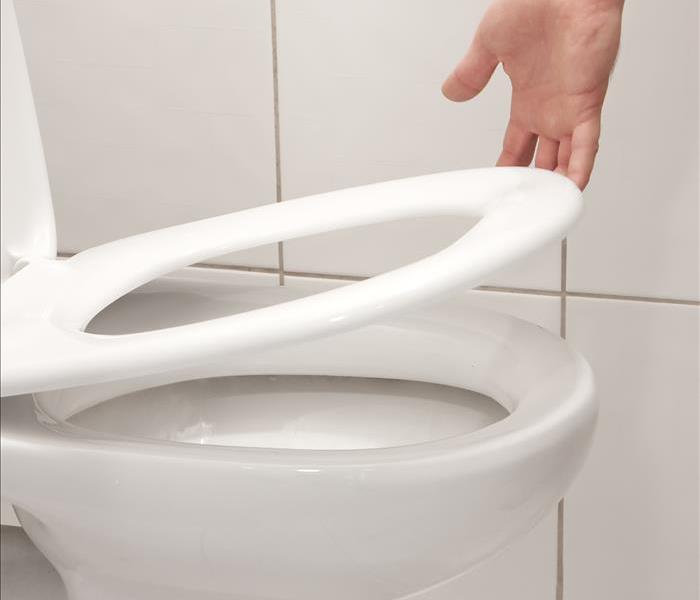 Avoid cleaning up contaminated water on your own.
Avoid cleaning up contaminated water on your own.
Water Damage can be classified into three types of contaminated water. Each type requires a different plan of action that will be determined by SERVPRO experts when they inspect your home or business.
Category 1:
- Water from a clean source is like a broken water line.
- If left untreated can degrade into a category 2 or 3.
Category 2:
- May contain bacteria and viruses.
- Can quickly degrade into category 3 if left untreated.
- Some examples include washing machine overflow or dishwasher overflow.
Category 3:
- Grossly contaminated and could cause health effects.
- May contain untreated sewage, harsh chemicals, and microbes.
- Water from flooding rivers or a sewer backup.
Water contaminated with a sewage backup is considered an emergency and should be treated as quickly as possible. SERVPRO is available 24 hours a day 7 days a week. We have experts with specialized training to restore your building to its pre-disaster condition.




 24/7 Emergency Service
24/7 Emergency Service





